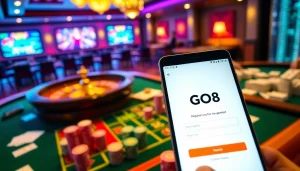Ultimate Guide to Gamification Learning and Development in 2025

Introduction to Gamification Learning and Development
As organizations seek innovative methods to enhance employee training and engagement, the concept of gamification in learning and development has gained traction. By integrating game-like features into educational contexts, organizations can create more captivating, effective learning experiences. This approach not only promotes engagement but also enhances information retention and application, which are critical in today’s rapidly evolving workplace. If you want to explore effective applications of gamification learning and development, understanding its fundamental components and practices is essential.
What is Gamification in Learning?
Gamification refers to the application of game design elements in non-game contexts, namely within learning environments. This includes techniques such as point scoring, leaderboards, assessments, and rewarding achievements. Essentially, gamification aims to tap into the intrinsic motivations of learners, turning mundane educational tasks into engaging and competitive challenges. By doing so, it transforms the way people absorb information and develop skills, allowing for a more interactive and playful learning atmosphere.
Benefits of Gamification for Learners
Gamification offers numerous benefits that can significantly improve the learning experience for participants:
- Increased Engagement: Game-like environments can capture attention, making learners more likely to participate actively.
- Enhanced Retention: Engaging formats can help material stick in the minds of learners far better than traditional methods.
- Motivation: The competitive element common in gamification, such as earning rewards or points, can serve as powerful motivators.
- Immediate Feedback: Gamification typically offers real-time feedback, allowing learners to adjust their approaches quickly.
- Skill Application: Through simulations and role-playing scenarios, learners can practice skills in safe and controlled environments.
Common Challenges in Implementation
While gamification has significant potential, its implementation is not without challenges. Organizations may face:
- Misalignment with Learning Objectives: Without a clear understanding of the desired outcomes, gamified activities can detract from learning objectives.
- Overemphasis on Competition: A purely competitive environment can alienate some learners; thus, balance is key.
- Insufficient Resources: Designing effective gamified programs can require substantial time and investment, which may be lacking.
- Technical Challenges: Implementing gamified systems often requires technological support, which may not be readily available.
Key Elements of Gamification in Training
Game Mechanics and Their Applications
At the core of gamification are various game mechanics that enhance the learning experience. Some of the most effective include:
- Points: Assigning points for completed tasks provides a quantifiable measure of progress and success.
- Leaderboards: Ranking learners based on performance fosters a competitive spirit and motivates others to improve.
- Badges: Earning badges for achievements gives recognition to learners, encouraging further participation.
- Progress Bars: Visual representations of progress can keep learners informed about how close they are to completing a task.
- Storytelling: Incorporating narrative elements can create a more immersive experience, making learning feel relevant and relatable.
Designing Engaging Learning Experiences
Effective gamification goes beyond mere mechanics to create engaging experiences. This involves:
- User-Centered Design: Understanding your learners’ preferences and motivations is essential to design engaging content.
- Layered Challenges: Different levels of challenges can cater to varying skill levels, ensuring no one feels overwhelmed or bored.
- Story Integration: Creating a compelling narrative can enhance engagement by giving context to the learning material.
- Social Interaction: Facilitating interactions among learners helps build a community and promotes collaborative learning.
Integrating Technology for Enhanced Gamification
The right technology can enhance gamified learning experiences significantly. Consider tools that provide:
- Learning Management Systems (LMS): These can automate the assignment of badges, track progress, and maintain leaderboards.
- Mobile Accessibility: Ensuring that gamified content is accessible on mobile devices maximizes learner engagement.
- Data Analytic Tools: These can help analyze learners’ progress and adjust the difficulty level of challenges in real-time.
- Interactive Platforms: Utilizing interactive platforms, such as simulations or virtual worlds, can deepen engagement.
Best Practices for Implementing Gamification
Defining Clear Objectives for Training
The first step in implementing gamification is to define clear learning objectives. These should align with organizational goals and address specific learning outcomes. By identifying what success looks like—whether it be improved knowledge retention, increased employee satisfaction, or faster onboarding—organizations can design gamified experiences that serve those ends effectively.
User-Centric Design Approach
A user-centric approach ensures that the gamified experience is relevant to the learners. This means actively involving participants in the design process and gathering their feedback on what motivates them. Surveys, focus groups, and pilot programs can uncover valuable insights into learners’ preferences, which can be used to tailor gamified elements effectively.
Testing and Iterating Gamified Programs
Implementing gamification should not be a one-off event. Continuous iteration based on user feedback and performance metrics is crucial. Organizations should conduct regular reviews to assess the efficacy of gamified training, making adjustments as necessary to improve engagement and learning outcomes. This feedback loop can help organizations refine gamified elements, ensuring they remain relevant and effective over time.
Case Studies: Successful Gamification Examples
Corporate Training Success Stories
Many companies have successfully integrated gamification into their training programs. Companies such as Deloitte have utilized gamified elements in their learning management systems to enhance engagement among their employees significantly. For instance, Deloitte’s ‘Leadership Academy’ uses gamified features to create a dynamic learning environment that promotes skill acquisition through challenges and competition.
Education Sector Innovations
In addition to corporate training, educational institutions have embraced gamification to improve student engagement and performance. For instance, the University of Pennsylvania’s Wharton School implemented gamified online courses, integrating challenges that contributed to higher completion rates compared to traditional formats. Students respond positively to interactive elements, leveraging competition to succeed academically and socially.
Lessons from Gamified Onboarding Processes
Several companies have also leveraged gamification to enhance their onboarding processes. For example, Zappos employs gamified onboarding to introduce new hires to company culture and values, creating challenges that familiarize them with processes and teams in a fun and engaging manner. This approach has resulted in faster adaptation to the company culture and improved employee morale, as new hires feel more integrated from the start.
Measuring Success in Gamification Learning
Key Performance Indicators to Track
To gauge the success of gamification initiatives, organizations must establish relevant Key Performance Indicators (KPIs). Important KPIs to track include:
- Engagement Rates: Assessing how often learners are participating in gamified activities can shed light on overall engagement.
- Completion Rates: Monitoring the percentage of learners who finish the program helps determine its effectiveness.
- Knowledge Retention: Pre- and post-assessments can provide insight into whether learners retain the material taught.
- Skill Application: Evaluating how well learners apply their newly acquired skills on-the-job offers insights into real-world effectiveness.
Feedback Mechanisms from Participants
Regularly soliciting feedback from participants is crucial for understanding the effectiveness of gamified programs. Using surveys, interviews, and focus groups can help organizations gather insights into what aspects of gamification worked, what challenges learners faced, and how the system could improve. Incorporating feedback into future iterations creates a responsive and learner-focused approach to gamification.
Continuous Improvement Strategies
Success in gamification relies on a commitment to continuous improvement. Organizations should foster an environment where experimentation is encouraged; this means being open to adjusting mechanics, changing visuals, or revisiting objectives based on feedback and performance data. By maintaining agility and responsiveness to learners’ needs, organizations can ensure their gamified programs remain effective over time.





